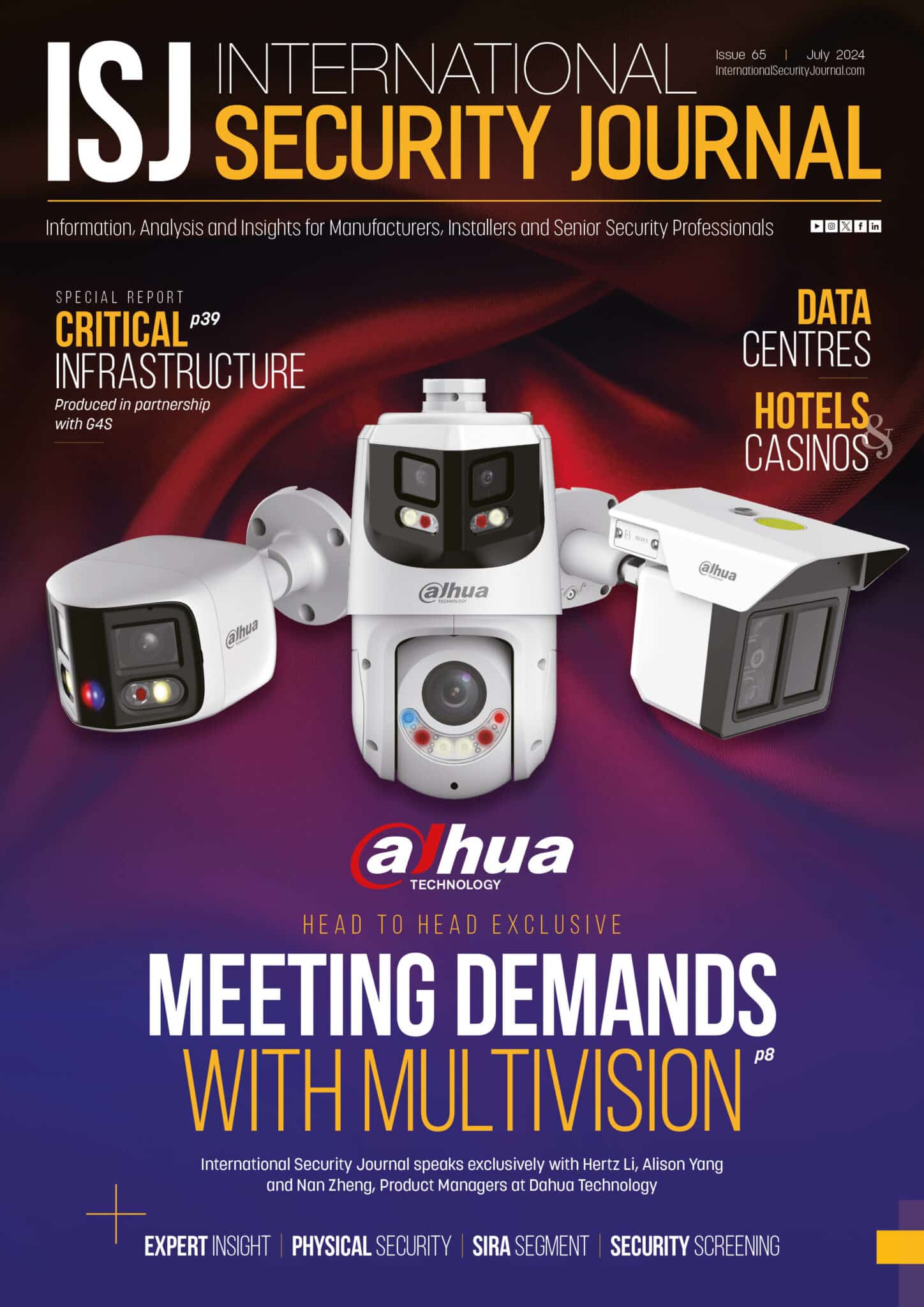Revolutionising visitor management with cloud-based systems


James Thorpe
Share this content
acre security’s Andrea McCabe explores how cloud-based systems are transforming access control.
In today’s complex business landscape, marked by macroeconomic upheavals, geopolitical tensions and supply chain disruptions, organisations across various sectors face numerous challenges.
Regulatory demands, business interruptions and security threats are among the concerns.
However, one area where businesses can exert control is through the adoption of cloud-based visitor management systems.
The pandemic has served as a catalyst for digital transformation, accelerating the adoption of cloud technology and cloud-based systems globally.
This shift, especially in the realm of visitor management, is being recognised for its extensive benefits.
At acre, we conducted a study to explore the attitudes and experiences of organisations towards cloud-based visitor management, surveying professionals from various sectors, including those responsible for facilities, security, risk and compliance.
The findings? More than interesting.
Article Chapters
ToggleCloud-based systems: A growing necessity
The findings from our research underscore a widespread agreement on the essential nature of cloud-enabled visitor management systems across various industries.
This consensus is not surprising, given the multiple benefits these systems offer.
First and foremost, the pandemic has been a significant catalyst in changing how organisations perceive visitor management.
With heightened health and safety concerns, the ability to track visitor data effectively became crucial.
cloud-based systems provide this capability with enhanced efficiency and accuracy.
They enable organisations to not only register visitors upon arrival but also to track their movements within the premises.
This level of tracking is vital for contact tracing purposes, a critical need that emerged during the pandemic.
Identifying high risk individuals has also become a priority.

Cloud-based visitor management systems allow organisations to screen visitors against health declarations, travel histories or other risk factors in real time.
These systems also facilitate the implementation of controlled access protocols.
They can be programmed to restrict access to certain areas, ensuring that visitors are only able to enter zones that are deemed safe or relevant to their visit.
While the pandemic has accelerated digital transformation initiatives across sectors, it also led to a broader acceptance and integration of cloud-based systems.
Organisations have recognised the scalability, flexibility and cost-effectiveness of cloud-based systems, making them an attractive option compared to traditional, on-premises visitor management solutions.
The beauty of cloud-based systems
In the realm of visitor management, organisations today utilise a diverse range of methods to handle visitor operations.
While traditional approaches like manual registration and maintaining physical visitor logs are still prevalent, there is a shift towards more advanced solutions.
Cloud-based visitor management systems, in particular, have emerged as the preferred choice for a growing number of organisations, a trend that underscores their effectiveness and adaptability to contemporary needs.
The shift towards cloud-based visitor management systems is driven by compelling reasons. One of the primary motivations is compliance with regulatory standards.
In an era where data privacy and security is paramount, cloud-based systems offer robust features that help organisations comply with legal requirements.
These systems can be updated regularly to align with regulations, ensuring that organisations remain compliant without the need for constant manual oversight.
Another reason for the popularity of cloud-based systems is their ability to enhance the visitor experience.
These systems streamline the check-in process, reducing wait times and eliminating the need for filling out paperwork.
They offer features like pre-registration, QR code scanning and instant badge printing, which make the visitor experience smoother and more professional.
These systems also provide accurate real time tracking of visitors, which is essential for security and for managing visitor flow within the premises.
The confidence in cloud-based systems spans various sectors.
This confidence is grounded in their proven track record of enhancing operational efficiency, improving security measures and offering a seamless visitor experience.
While traditional visitor management methods are still in use, the inclination towards cloud-based systems reflects their superiority in meeting the demands of efficiency, compliance and visitor satisfaction.
The real world: Google
Google, a globally recognised leader in cloud computing and AI, faced a distinct challenge in managing the influx of visitors across its extensive network of global offices.
The company needed a visitor management solution that was not only robust in terms of security but also scalable to adapt to its ever-growing, innovative environment.
To meet these needs, we introduced two kiosks and an event management application designed to streamline and secure the visitor management process.
The kiosks are an advancement in visitor management, fully autonomous and equipped with state of the art technology to facilitate a smooth and secure check-in process.
They are designed to quickly authenticate and authorise visitors, minimising wait times and enhancing overall entry experiences.
The kiosks’ ability to instantly allocate host responsibility and authorise visitor access through a simple badge scan is not only efficient but also significantly bolsters security.

They seamlessly integrate with Google’s existing systems, ensuring a unified operation that aligns with Google’s advanced infrastructure.
Their minimal maintenance requirements are also beneficial for an organisation of Google’s scale, reducing the administrative burden significantly.
Complementing the kiosks is an event management application that plays a crucial role in managing large scale events at Google’s premises.
This application allows for self-service entry, where visitors scan QR codes on their badges to access authorised areas.
This is particularly effective in enhancing security, as it ensures that visitors are restricted to predefined zones and facilitates efficient crowd management.
The platform also aids in compliance with Google’s stringent security protocols.
The integration of these solutions into Google’s visitor management system has brought about a remarkable improvement in operational efficiency and security.
The visitor check-in process has become notably faster and more streamlined, providing Google with an enhanced ability to manage volumes of visitors without compromising on security or visitor experience.
Additionally, the comprehensive reporting capabilities of these systems have provided Google with deep insights into visitor patterns and preferences, crucial for future planning and security enhancements.
Google’s implementation of these solutions has demonstrated the vast potential and practical benefits of cloud-based visitor management in large, innovative organisations.
The success of this implementation highlights the effectiveness in meeting the needs of a multinational corporation, setting a benchmark for security, efficiency and visitor experience in the corporate world.
The road ahead: 2024 and beyond
As we enter 2024, the landscape for cloud-based visitor management systems is poised for transformative growth.
Across various sectors, there’s a growing appreciation of the myriad benefits these systems offer.
The fusion of compliance requirements, the pursuit of enriched visitor experiences, operational efficiency, scalability and cost-effectiveness is elevating cloud-based visitor management to a pivotal role in future technological ecosystems.
The journey ahead will revolutionise organisational security and efficiency.
These systems, characterised by rapid innovation, seamless integration and increased intelligence, are evolving beyond their traditional roles.
They are becoming integral to organisational operations, deeply embedded in compliance frameworks and playing a critical role in shaping customer experiences.
Innovation is at the heart of this evolution. Technologies like AI, IoT and advanced data analytics are increasingly becoming part of these systems.
AI promises more personalised and predictive visitor management by tailoring interactions based on historical data and specific visitor preferences.
The IoT will enhance the physical interaction within facilities, enabling features like automated door entries and personalised environmental settings, responding in real time to the needs of visitors.
The integration of cloud visitor management into broader business systems promises a more cohesive approach to organisational management.
These systems will break out of isolation, becoming part of a larger interconnected network that shares data and insights across various platforms.
This will boost overall operational efficiency and inform better decision-making.
For example, integration with HR systems could simplify the process of onboarding new employees, while connections with CRM systems could personalise the experience for repeat visitors or clients.
The intelligence aspect of these systems will also see significant advancements. Using advanced analytics, organisations will gain critical insights into visitor behaviour, space utilisation and security patterns.
These insights will enable data-driven decision-making, optimising resource allocation and strengthening security measures.
Predictive analytics could be leveraged to foresee busy periods or potential security issues, allowing for proactive resource and security management.
Of course, visitor management holds the promise of a smoother, more efficient and personalised journey for visitors.
From the moment they enter a facility, these systems will provide a bespoke experience – rapid check-ins, automated guidance and interactions tailored to the visitor’s specific needs and preferences.
Such personalisation and efficiency will not only boost visitor satisfaction but also positively impact the organisation’s brand perception.
The future of cloud-based visitor management systems is shaping up to be a new era marked by heightened efficiency, security and innovation.
As these systems grow more sophisticated, their influence on operational strategies, compliance adherence and customer experience enhancement will expand significantly.
This evolution positions visitor management as a vital tool, propelling organisations towards greater sophistication and operational excellence.
acre security
acre security is a global leader in the delivery of integrated technologies and services.
Since its formation in 2012, acre has played an instrumental role in the development and implementation of security technology initiatives on a global scale.
Today, the organisation employs more than 500 employees in more than 25 countries.
To find out more information, visit: www.acresecurity.com

